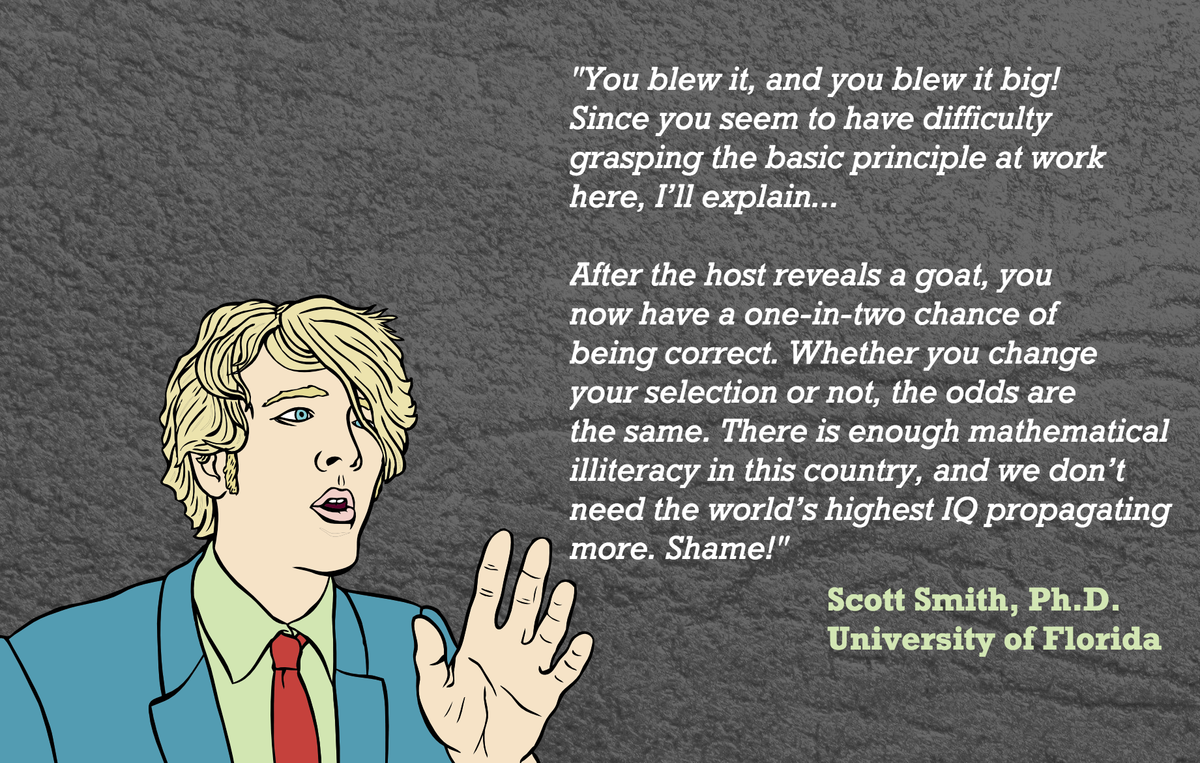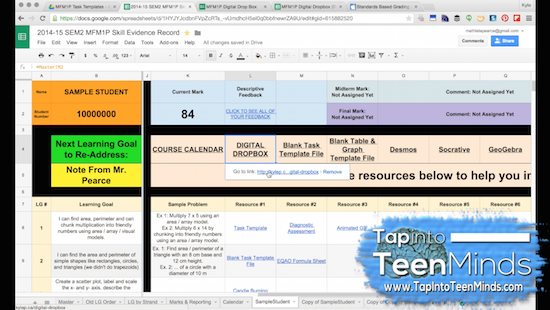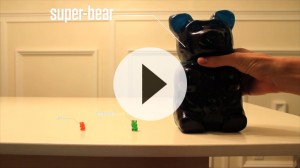 Another great product of the MTBoS (Math Twitter Blog-o-Sphere) has just launched via @marybourassa. Which One Doesn't Belong (wodb.ca) is a new website that houses a pile of these little square images. You can read about how Mary about how she uses these in her calculus class here (spoiler alert: she is having her students create these) and her grade 10 class with surface area and volume here, and the launch of the website here.
Another great product of the MTBoS (Math Twitter Blog-o-Sphere) has just launched via @marybourassa. Which One Doesn't Belong (wodb.ca) is a new website that houses a pile of these little square images. You can read about how Mary about how she uses these in her calculus class here (spoiler alert: she is having her students create these) and her grade 10 class with surface area and volume here, and the launch of the website here.The premise is that we are given four images (numbers, shapes or graphs) and simply asked "Which One Doesn't Belong? Besides the obvious part that starts the conversation about math in your class, the very cool thing about these is that they are constructed so that there is a reason that could be used to suggest any one of the four doesn't belong. So for example looking at the calculus image in the middle (below) the top left doesn't have a max or min, the top right have an asymptote, the bottom left has two vertical asymptotes and the bottom right has an oblique asymptote. The other thing about that is that in those discussions you might find more than one reason for a particular thing to not belong. So for example in the number example below, the 43 doesn't belong because it's a prime number or because it's not a perfect square
Right now, there are three categories: Shapes, Graphs & Equations, and Numbers
Curriculum Tags: All
http://wodb.ca/
http://marybourassa.blogspot.ca/2015/03/announcing-which-one-doesnt-belong.html
http://marybourassa.blogspot.ca/2015/03/which-one-doesnt-belong-for-calculus.html
 I like when Rhett Allain does his video analysis posts because we can usually bring those into math class. In this particular one the subject is jumping. Specifically jumping competitions. In this case, standing long jump and a height jump. So there is a link to great video that shows good quadratic motion and he does a lot of great analysis that goes way beyond just quadratics.
I like when Rhett Allain does his video analysis posts because we can usually bring those into math class. In this particular one the subject is jumping. Specifically jumping competitions. In this case, standing long jump and a height jump. So there is a link to great video that shows good quadratic motion and he does a lot of great analysis that goes way beyond just quadratics.Curriculum Tags: MPM2D, MFM2P, MCR3U, MCF3M, MBF3C
http://www.wired.com/2015/02/physics-record-breaking-long-jump/
 I saw this on Andrew Stadel's blog. He was doing a summary of the week and one part was about a version of War that his colleague made. Different representations of rational number on cards (print them out here). Kids decide which is bigger. You can take out the fraction cards and even do this in grade 8. Check out Andrew's instructions on his site
I saw this on Andrew Stadel's blog. He was doing a summary of the week and one part was about a version of War that his colleague made. Different representations of rational number on cards (print them out here). Kids decide which is bigger. You can take out the fraction cards and even do this in grade 8. Check out Andrew's instructions on his siteCurriculum Tags: Gr8, MPM1D, MFM1P
http://mr-stadel.blogspot.ca/2015/03/a-jammed-rational-irrational-war.html
 Pi Day leftovers. Wolfram Alpha created a neat little app (http://mypiday.com/) that takes your birthday and finds out where it appears in the first million digits of pi. Fun. Check out their blog post for their PiDay fun and try your birthday out in the PiDay app. Thanks to Sue Latour for pointing this one out.
Pi Day leftovers. Wolfram Alpha created a neat little app (http://mypiday.com/) that takes your birthday and finds out where it appears in the first million digits of pi. Fun. Check out their blog post for their PiDay fun and try your birthday out in the PiDay app. Thanks to Sue Latour for pointing this one out.Curriculum Tags: All
http://mypiday.com/
http://blog.wolframalpha.com/2015/03/12/pi-or-pie-celebrating-pi-day-of-the-century-and-how-to-get-your-very-own-piece-of-pi/
 Hey, data is good. And if you can find data that might interest students, even better. So here is some data from the TV show Glee. It's just finishing right now but take a look at its viewership over the years. There are some interesting blips that could be easily discussed (like the spike when the episode followed the superbowl)
Hey, data is good. And if you can find data that might interest students, even better. So here is some data from the TV show Glee. It's just finishing right now but take a look at its viewership over the years. There are some interesting blips that could be easily discussed (like the spike when the episode followed the superbowl)Curriculum Tags: MDM4U
http://fivethirtyeight.com/datalab/glee-had-a-great-run-but-its-a-shadow-of-its-former-self/
 More Piday remnants. This time its an interesting way to connect data to Pi. The question is, how many digits of pi do you have to memorize to be considered "Special". Almost 1000 people were surveyed and here are some results. This might be a neat thing to do in your classes.
More Piday remnants. This time its an interesting way to connect data to Pi. The question is, how many digits of pi do you have to memorize to be considered "Special". Almost 1000 people were surveyed and here are some results. This might be a neat thing to do in your classes.Curriculum Tags: Gr7, Gr8, MBF3C, MDM4U
http://fivethirtyeight.com/datalab/how-many-digits-of-pi-you-have-to-have-memorized-to-be-special/
 When we introduce trig we are supposed to do it via investigation. And if you are going to use investigation, then it is pretty standard to start with similar triangles. Here is a post from Sam Shah that basically gives his whole process. All 135 pages of it. I love it when people share like this and one of the things I like are the 89 pages of right triangles one made with each degree from 1 to 89.
When we introduce trig we are supposed to do it via investigation. And if you are going to use investigation, then it is pretty standard to start with similar triangles. Here is a post from Sam Shah that basically gives his whole process. All 135 pages of it. I love it when people share like this and one of the things I like are the 89 pages of right triangles one made with each degree from 1 to 89.Take a look at the progression of the concepts.
Curriculum Tags: MPM2D, MFM2P
http://samjshah.com/2015/03/25/my-introduction-to-trigonometry-unit-for-geometry/
 Nice to see there are some stereotypes that continue to be broken. This pro football player has just published a paper in a math journal.
Nice to see there are some stereotypes that continue to be broken. This pro football player has just published a paper in a math journal.Curriculum Links: All
http://its-interesting.com/2015/03/19/baltimore-ravens-offensive-lineman-john-urschel-publishes-paper-in-math-journal/
It's always good to have real examples of mathematical concepts. In this video they go over how you can use the 3-4-5 triangle to create a footprint for a construction project with square corners. Then at the end shows how to make sure a quadrilateral is a rectangle by measuring the diagonals. Thanks to Graham Gould for this one.
Curriculum Tags: Gr8, MPM1D, MFM1P, MPM2D, MFM2P
https://www.youtube.com/watch?v=2kZWyU9wyIQ
It's maybe not appropriate for math class (starting with 38 if you don't like guns and then of course .....69 dudes) but here are the first 200 numbers as images via Google image search. It's still pretty neat how some of the numbers are coopted.
Curriculum Tags: All
Vi Hart release another one of her anti Pi (pro Tau) videos on last weeks Pi Day. Always entertaining.
Curriculum Tags: All
https://www.youtube.com/watch?v=2E9m6yDEIj8
What starts out as a talk about the connection between math and sex turns out to be a talk about patterning and modelling in mathematics.
Curriculum Tags: All
https://www.youtube.com/watch?v=H2vN2QXZGnc
Add this one to your list of coupon images. Which one would you choose?
Curriculum Tags: Gr7, Gr8, MPM1D, MFM1P
https://twitter.com/davidpetro314/status/579726859916693504
Which coupon would you choose? #mathchat pic.twitter.com/VO8ff6IwFJ
— David Petro (@davidpetro314) March 22, 2015
Some big data on big data. You could easily find some connection to exponential growth here. Thanks to David Broad for this one
Curriculum Tags: MCR3U, MCF3M, MBF3C, MAP4C, MCT4C, MDM4U
http://www.bitrebels.com/technology/things-know-big-data-infographic/
































